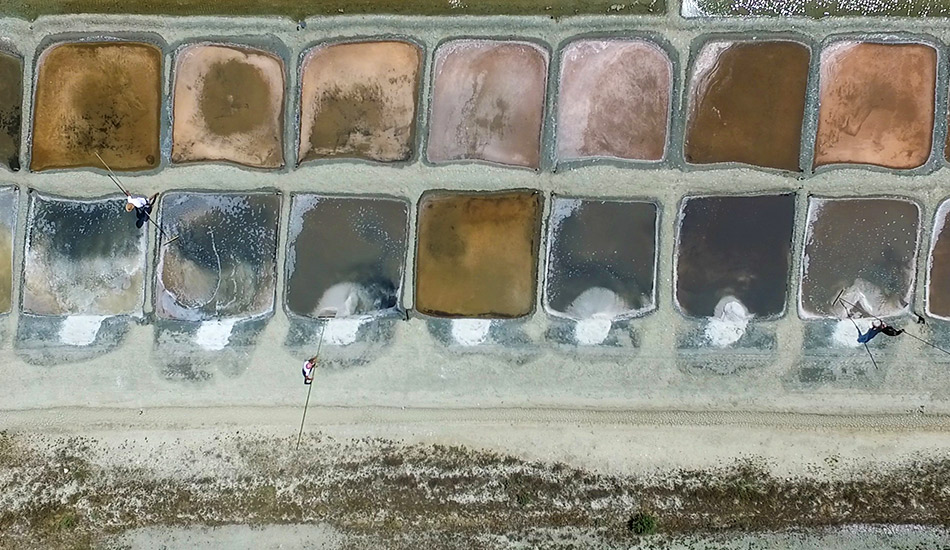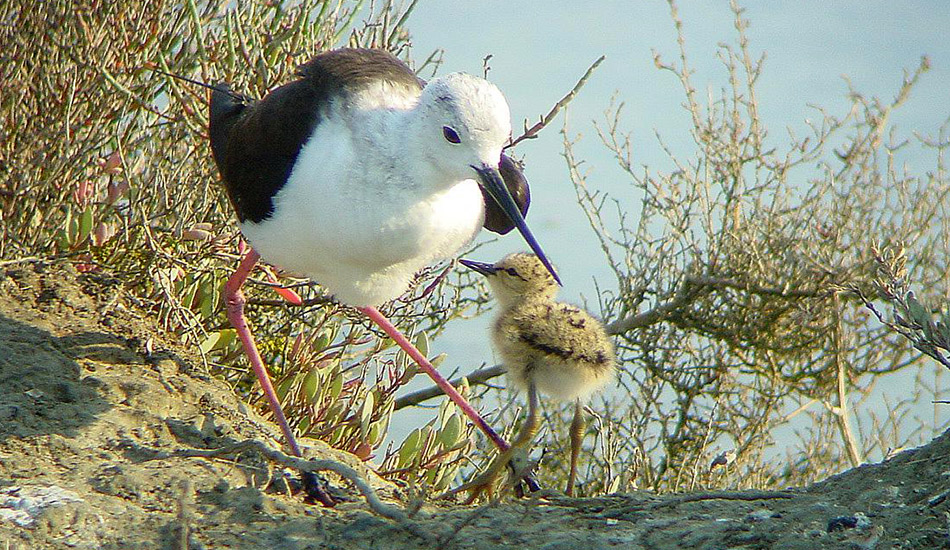GEOGRAPHY OF THE SALT MARSHES
Formerly, Ré Island consisted of 4 islets. Over time, they came together forming a bay between them. The sea deposited clay sediments in the heart of the archipelago, creating new areas that, dammed and shaped by humans, became salt marshes. It was in the 19th century that Ré Island was formed by its current contours. The salt marshes are found in the north western parts of the island, between Loix, Ars, Saint-Clément and the lighthouse ‘Le Phare des Baleines.’
Close to La Rochelle, Ré Island offers a charming life and is popular with many visitors. It is also a fertile territory for quality products such as Pineau and local wines, oysters, potatoes and, of course, sea salt. Located at the crossroads of maritime routes, Ré benefits from generous sunshine and summer sea breezes conducive to salt farming. Since the Middle Ages the island has been one of the main production sites of sea salt in Western France. Sea salt farming has such an important role that the island is nicknamed ‘Ré La Blanche’ (Ré the White). "White Gold" is sold throughout the Kingdom and North of Europe, ensuring the economic prosperity of the Island and the Region.

THE SALT MARSH: A RICH AND FRAGILE ECOSYSTEM
The temperate climate, the oceanic influence and the humid environment of the marshes allow the development of a very particular vegetation which shelters a rich and wild fauna with many rare and endangered species. Throughout the seasons, by its geographical location on a migration route, the salt marshes provide an ideal setting for many birds. Over the course of the seasons over 300 species of birds can be observed feeding, nesting and breeding in the salt marshes: herons, white stilts, elegant avocets, egrets, terns, geese and Belon ducks.

The benefits of the salt marshes have been recognized by the community and protective measures have been taken in particular in the Fier d'Ars sector near the village of Les Portes en Ré:
- Classified as Special Protection Area for Natura 2000 National Heritage, in 1986
- Proposed as a Site of Community Importance in 2002.
- Inscribed in the RAMSAR Convention (Intergovernmental Treaty on Wetlands of International Importance) in 2003, classified as a Natural Area of Ecological, Fauna and Floristic Interest
In addition, a contract for the restoration and maintenance of wetlands has been put in place and the salt farmers are committed to cleaning the marshes in the spring, creating nesting islands and ensuring maintenance of invasive plant species. Thus, by their work, the salt farmers participate in the enhancement of landscapes and the maintenance of biodiversity.
